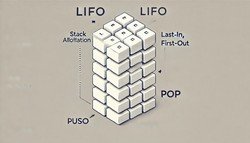HTTPS (HyperText Transfer Protocol Secure)
 (Representational Image | Source: Dall-E)
(Representational Image | Source: Dall-E)
Quick Navigation:
- HTTPS Definition
- HTTPS Explained Easy
- HTTPS Origin
- HTTPS Etymology
- HTTPS Usage Trends
- HTTPS Usage
- HTTPS Examples in Context
- HTTPS FAQ
- HTTPS Related Words
HTTPS Definition
HTTPS (HyperText Transfer Protocol Secure) is an extension of HTTP that uses encryption to secure communication between a web browser and a website. It employs SSL (Secure Sockets Layer) or TLS (Transport Layer Security) protocols to encrypt data, ensuring confidentiality, integrity, and authenticity. HTTPS is crucial for protecting sensitive information such as passwords, credit card details, and personal data from interception or tampering by malicious actors.
HTTPS Explained Easy
Imagine writing a secret letter to a friend and locking it in a safe before sending it. Only your friend knows the combination to open the safe. HTTPS works similarly: when you send information over the internet, it locks (encrypts) the data so only the website you’re communicating with can unlock (decrypt) and read it.
HTTPS Origin
HTTPS was introduced by Netscape in 1994, building on the original HTTP protocol. The goal was to enable secure transactions on the internet, especially for online banking and e-commerce. Over time, HTTPS became the global standard for secure online communication.
HTTPS Etymology
The term HTTPS adds an 'S' to HTTP, symbolizing "secure," emphasizing its encrypted and protected nature.
HTTPS Usage Trends
In recent years, HTTPS adoption has skyrocketed. Modern browsers now mark websites without HTTPS as insecure. Major search engines also favor HTTPS-enabled websites in search rankings. This trend has made HTTPS mandatory for all credible websites, whether for e-commerce, blogs, or government portals.
HTTPS Usage
- Formal/Technical Tagging:
- Internet Protocols
- Web Security
- Encryption Standards - Typical Collocations:
- "HTTPS connection"
- "secure HTTPS website"
- "SSL/TLS certificate"
- "HTTPS encryption"
HTTPS Examples in Context
- Online banking platforms use HTTPS to protect users’ financial data during transactions.
- E-commerce sites employ HTTPS to ensure customers’ credit card details remain confidential.
- Login pages across social media and email services utilize HTTPS for secure user authentication.
HTTPS FAQ
- What is HTTPS?
HTTPS is a secure version of HTTP that encrypts data between the browser and website. - How is HTTPS different from HTTP?
HTTPS uses SSL/TLS protocols to encrypt communications, while HTTP does not. - Is HTTPS mandatory for websites?
While not legally required, HTTPS is strongly recommended and often expected by users and browsers. - What does a padlock icon in the browser address bar mean?
It indicates that the website is using HTTPS for secure communication. - Can HTTPS be hacked?
Although HTTPS is very secure, vulnerabilities can exist if the server is not properly configured or if weak encryption is used. - Does HTTPS slow down website performance?
Modern encryption techniques are optimized, making performance impact negligible. - Are HTTPS certificates free?
Yes, services like Let’s Encrypt offer free SSL/TLS certificates. - How do websites get HTTPS certificates?
They can obtain them from certificate authorities (CAs) and install them on their servers. - Is HTTPS enough to protect my online privacy?
HTTPS secures data in transit, but it’s one part of an overall privacy strategy. - Why do some sites still use HTTP?
Some outdated websites haven’t upgraded, though browsers now warn users when accessing such sites.
HTTPS Related Words
- Categories/Topics:
- Web Security
- Internet Protocols
- Encryption
- SSL/TLS
- Cybersecurity
Did you know?
Google announced in 2014 that HTTPS would become a ranking signal in its search algorithm. This move encouraged millions of websites to switch to HTTPS, significantly improving the safety and trustworthiness of the internet.
Authors | Arjun Vishnu | @ArjunAndVishnu

PicDictionary.com is an online dictionary in pictures. If you have questions or suggestions, please reach out to us on WhatsApp or Twitter.
I am Vishnu. I like AI, Linux, Single Board Computers, and Cloud Computing. I create the web & video content, and I also write for popular websites.
My younger brother, Arjun handles image & video editing. Together, we run a YouTube Channel that's focused on reviewing gadgets and explaining technology.
















Comments (0)
Comments powered by CComment